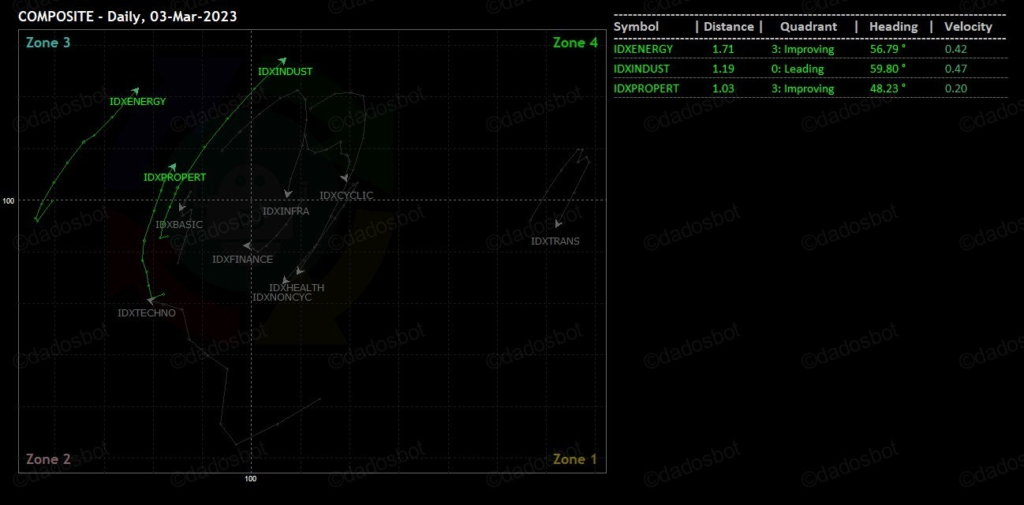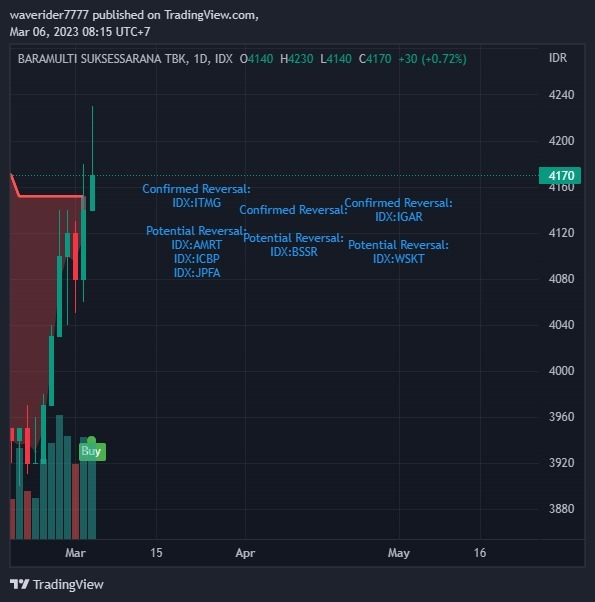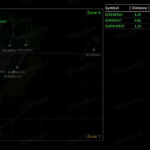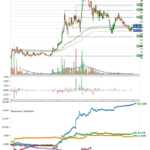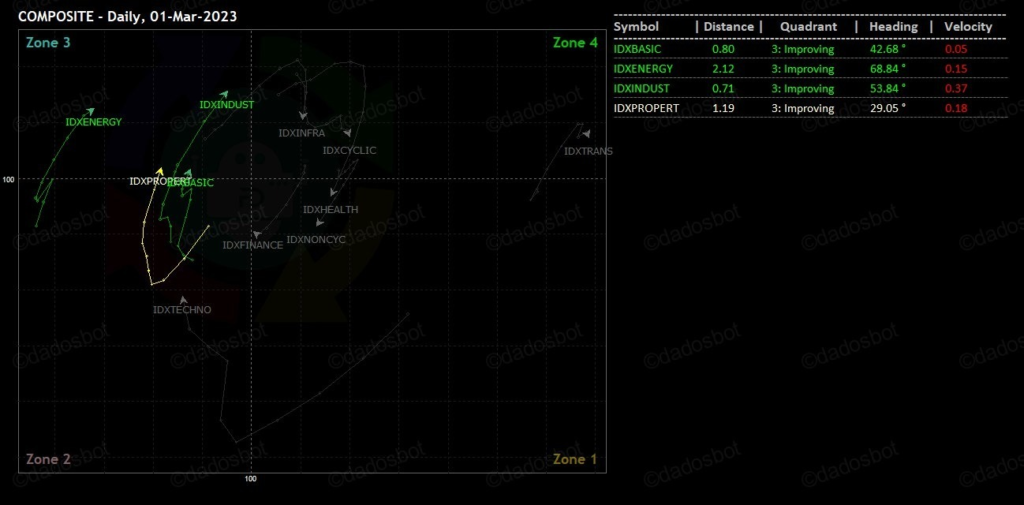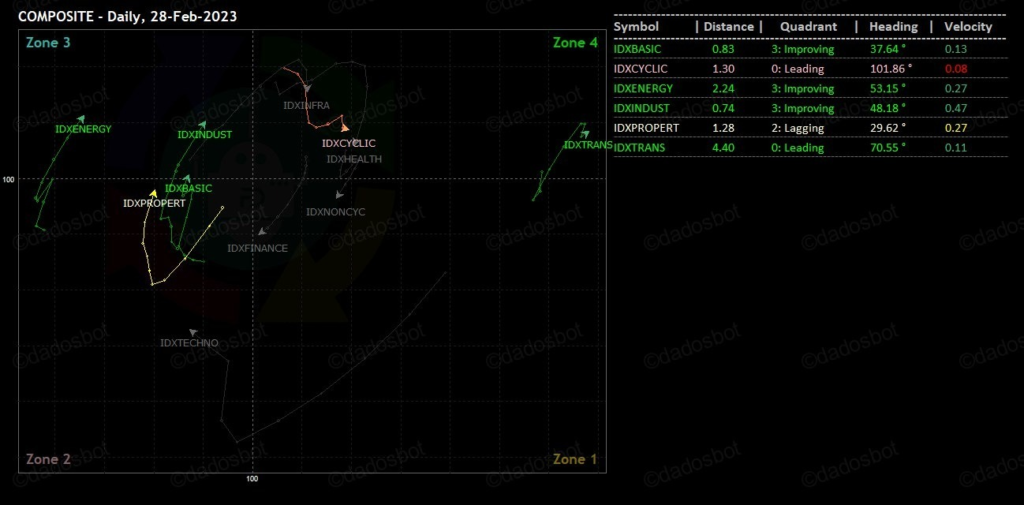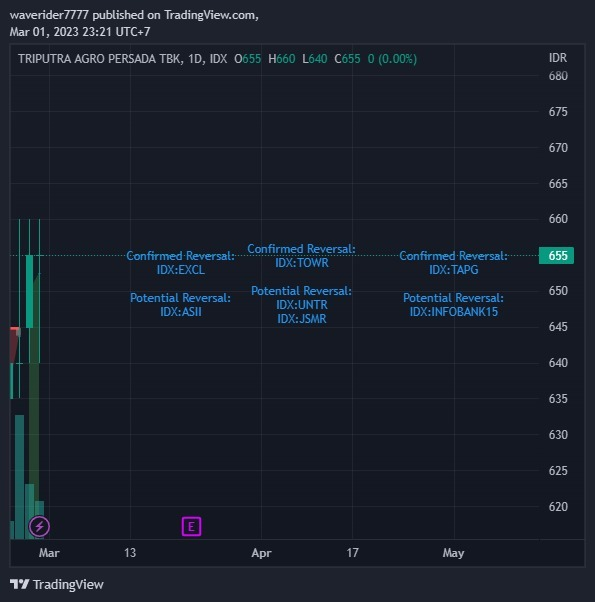Daily Analysis 20230306

March 06th, 2023
Good morning,
Stocks close higher Friday, Dow breaks 4-week losing streak as 10-year Treasury yield retreats
Stocks rose Friday as Treasury yields eased from their recent highs and investors weighed the cumulative impact from Fed hikes already implemented and digested this week’s comments from the central bank.
Dow…..33391 +387.4 +1.17%
Nasdaq11689 +226.02+1.97%
S&P 500.4046 +64.3 +1.61%
FTSE…….7947 +3.1 +0.04%
Dax……..15578 +250.8 +1.64%
CAC……..7348 +63.9 +0.88%
Nikkei…..27927 +428.6 +1.56%
HSI……. .20568 +138.1 +0.68%
Shanghai.3328 +17.7 +0.54%
IDX…..6813.64 -43.78 -0.64%
LQ45….938.96 -6.81 -0.32 %
IDX30…488.79 -4.47 -0.91%
IDXEnergy…2107.96 -6.81 -0.32%
IDX BscMat 1218.98 -2.68. -0.22%
IDX Indstrl..1197.20 -9.57 -0.79%
IDXNONCYC..731.63 -8.37 -1.13%
IDX Hlthcare1555.33 -5.62 -0.36%
IDXCYCLIC…845.42 -1.61 -0.19%
IDX Techno.5455.78 +43.53 + 0.80%
IDX Transp..1844.09 -25.53 -1.37%
IDX Infrast….848.99 +4.13 +0.49%
IDX Finance1404.95 -10.17 -0.72%
IDX Banking1127.75 -12.61 -1.11%
IDX Property….694 -4.80 -0.69%
Indo10Yr.6.9361 +0.0256 +0.37%‼️
ICBI….349.0803 -0.0894 -0.03%‼️
US2Yr 4.8606‼️-0.0004 -0.01%
US5Yr 4.2492‼️ -0.0038 -0.09%
US10Yr3.9580‼️ -0.0050 -0.14%
US30Yr.3.8780‼️-0.0090 -0.24%
VIX……. 18.49 -1.10 -5.62%
USDIndx104.5210 -0.4630 -0.44%‼️
Como Indx.275.05 +3.75 +1.38%
(Core Commodity CRB)
BCOMIN….162.00 +0.42 +0.26%
IndoCDS..105.25 – -%
(5-yr INOCD5) (07/11)
IDR…..15311.00 +30.50 +0.20%‼️
Jisdor.15306.00 +33.00 +0.22%‼️
Euro……1.0635 +0.0036 +0.34%
TLKM….26.02 +0.31 +1.21%
(39283)
EIDO……22.61 -0.21 -0.92%
EEM……39.54 +0.35 +0.89%
Oil……79.68 +1.52 +1.94%
Gold.1854.60 +14.10+0.77%
Timah 25334 – -%
(Closed 03/01)
Nickel…24675 +443.00 +1.83%
(Closed 03/03)
Silver…….21.24 +0.34 +1.61%
Copper..406.70 -0.90 -0.22%
Nturl Gas.2.790 -0.021 -0.75%
Ammonia 4406.67 -16.67 -0.38%
China
(Domestic Price)(03/02)
Coal price.188.90 -4.10 -2.12%
(Mar/Newcastle)
Coal price.195.40 -2.60 -1.31%
(Apr/Newcastle)
Coal price.199.30 -2.35 -1.17%
(May/Newcastle)
Coal price.201.00 -4.35 -2.12%
(Jun/Newcastle)
Coal price.131.75 -11.50 -8.03%‼️
(Mar/Rotterdam)
Coal price 126.25 -13.75 -9.82%‼️
(Apr/ Rotterdam)
Coal price 126.80 -14.20-10.07%‼️
(May/Rotterdam)
Coal price 127.35 -14.35 -10.13%‼️
(Jun/Rotterdam)
CPO(May)…4357 +64 +1.49%
(Source: bursamalaysia.com)
Corn……..639.75 +6.00 +0.95%
SoybeanOil..61.19 -0.71 -1.15%
Wheat……708.75 -4.00 -0.56%
Wood pulp…5800.00 unch +0%
(Closed 03/05)
©️Phintraco Sekuritas
Broker Code: AT
Desy Erawati/ DE
Source: Bloomberg, Investing, IBPA, CNBC, Bursa Malaysia
Copyright: Phintraco Sekuritas
US closing jum’at ijo tebel, in fact malah IHSG doang yang closing merah, semua asia eropa ijo… 😅
Oil Ijo Gas Coal merah, metal2 ijo semua, kecuali copper, CPO ijo, TINS udah buy signal, mungkin MDKA hari ini kalo closing ijo
IHSG – retest fibo 38, dan pas mantul disitu seperti sebelumnya. Stoch buy, macd down, BD FF dist, MFI W% down, masih optimis false break jadi mantul
Industrials, Property, Energy
Stoch Buy Signal: INTP MDKA TBIG DSNG MNCN
MACD Buy Signal: GOTO TBIG TINS
Alligator Buy Signal: ASII ITMG UNTR APIC CTRA
Supertrend Buy Signal: BSSR

